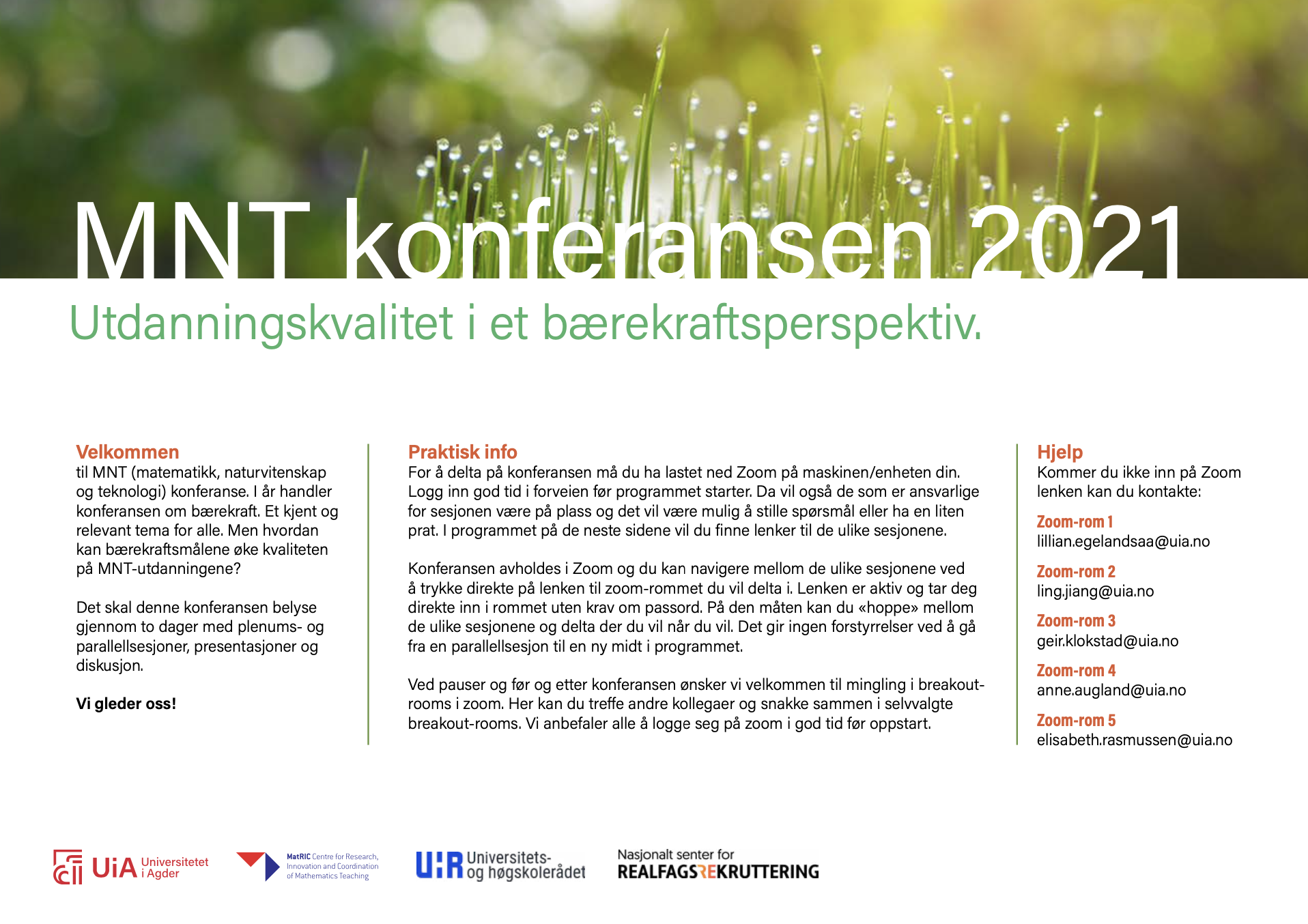Experiences with informal student panel for continuous formative course evaluation
DOI:
https://doi.org/10.5324/njsteme.v5i1.3928Resumé
Background: Summative student evaluations of teaching is widely used to evaluate
course content and instruction. However, this feedback does not benefit the students who are pro
viding the feedback, and may postpone feedback such that the evaluation is not useful in correcting
issues in the course. There are several issues with this type of feedback that are tacled in this work:
(i) The evaluation is not a help for the current students. (ii) The feedback is often imprecise. (iii)
Evaluations focus on the quality of the teaching, rather than the impact of the learning. Previous
work [1, 2] have shown that continuous student involvement can improve the feedback received.
The idea in this project is to perform this student panel interaction in an informal setting, conti
nously throughout the semester.
Methods: This intervention has been performed for two consecutive semesters in different courses.
During the first lecture of the semester, students were recruited to participate in a weekly informal
meeting to discuss the instruction in the course. Weekly meetings were held for one full semester,
with each meeting lasting around 45 minutes. Notes were taken on all actionable items, and a
summarizing report was written. This intervention has been evaluated through the inspection of
actionable items in the notes, as well as the implemented items.
Results: 104/116 actionable items were identified during spring/fall 2020, of which 57/65 were im
plemented immidiately. Participation in the student panel group was high and stable.
Downloads
Downloads
Publiceret
Citation/Eksport
Nummer
Sektion
Licens
Copyright (c) 2021 Edvard Pedersen

Dette værk er under følgende licens Creative Commons Navngivelse (by).
The Nordic Journal of STEM Education licenses all content of the journal under a Creative Commons Attribution (CC-BY) licence. This means, among other things, that anyone is free to copy and distribute the content, as long as they give proper credit to the author(s) and the journal. For further information, see Creative Commons website for human readable or lawyer readable versions.
Authors who publish with this journal agree to the following terms:
1. Authors retain copyright and grant the journal right of first publication with the work simultaneously licensed under a Creative Commons Attribution License that allows others to share the work with an acknowledgement of the work's authorship and initial publication in this journal.
2. Authors are able to enter into separate, additional contractual arrangements for the non-exclusive distribution of the journal's published version of the work (e.g., post it to an institutional repository or publish it in a book), with an acknowledgement of its initial publication in this journal.
3. Authors are permitted and encouraged to post their work online (e.g., in institutional repositories or on their website) prior to and during the submission process, as it can lead to productive exchanges, as well as earlier and greater citation of published work (See The Effect of Open Access

